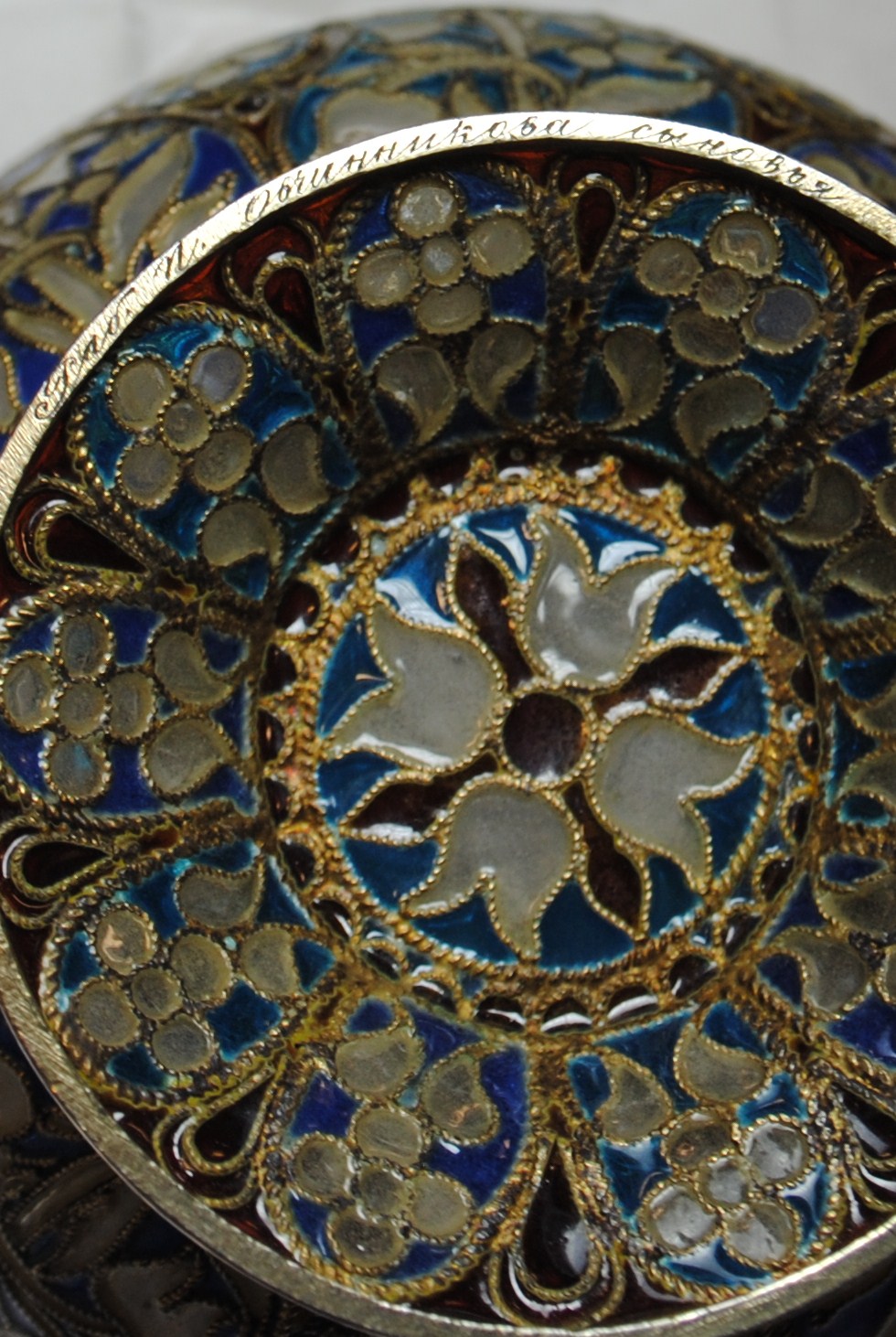4 June 2014 Russian Art Auctions
4 June 2014

* 586. A VERY FINE AND RARE PRESENTATION SILVER-GILT AND PLIQUE-À-JOUR ENAMEL SET
PAVEL OVCHINNIKOV, MOSCOW, CIRCA 1895, HAND ENDGRAVED SIGNATURE IN CYRILLIC ON A SMALLER KOVSH
Height of the beaker 12 cm, length of the larger kovsh 20 cm, of a smaller 11.5 cm each.
110,000–130,000 GBP
Comprising: a large beaker of tapering form, the body decorated with panels of stylised foliage on blue ground within white beaded borders alternating with panels depicting brightly-coloured tropical birds and a Chinese man dressed in yellow robes, twisted cable rims, supported on domed circular foot; a large kovsh with shallow bowl on raised foot, raised prow terminating with cone finial with flat shaped fleur-de-lys handle, enamelled with panels of birds, butterflies and foliage within blue-beaded borders, twisted cable rim; two small kovshi of typical form with circular bowls on raised foot and palmette-shaped flat handles, one decorated with stylised flower heads and scrolling foliage, the other with alternating turquoise and blue bean-shaped panels enamelled with stylised foliage within blue-beaded border and twisted cable rim, with a hand engraved signature in Cyrillic “Rab. P. Ovchinnikova synovia” under base; held in original case.
Plique-à-jour enamel – one of the most elegant and difficult enamelling techniques – became very popular in Russia towards the end of the 19th century. Fine wares and decorative objects executed in plique-à-jour enamel are considered to be the pinnacle of craftsmanship as only a handful of jewellers in the world could work in this technique, amongst them, Pavel Ovchinnikov.
The report from the All-Russia Exhibition held in Moscow in 1882, credited Pavel Ovchinnikov with the revival of this long-lost technique. The master craftsmen from his firm were among the first to start producing objects with plique-à-jour enamel. The production of plique-à-jour is technically very challenging and time-consuming, even the top masters would need to carry out several experiments before achieving the desired effect and colour.
The enameller had to be not only an accomplished painter, but also a superb technician. Very often due to technical issues, plique-à-jour enamel objects were destroyed at the very last stages of production, which makes them even more rare and desirable.
Although many shapes of types of objects could be executed in plique-à-jour, the Russian masters favoured the traditional forms of the kovsh, beakers, spoons and boxes etc. Plique-à-jour enamels have always been very expensive and were comparable to gems. Notwithstanding their apparent fragility, the enamel objects (which were fired at high temperatures) will keep their rich and vibrant colours for centuries.
The variety of forms, richness of colours together with the excellent condition of the set, which has been kept in its original presentation box, make this a unique and rare example of the craftsmanship of the enamellers working for Pavel Ovchinnikov.

Notes on symbols:
* Indicates 5% Import Duty Charge applies.
Ω Indicates 20% Import Duty Charge applies.
§ Indicates Artist's Resale Right applies.
† Indicates Standard VAT scheme applies, and the rate of 20% VAT will be charged on both hammer price and premium.